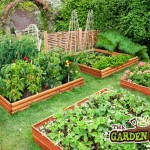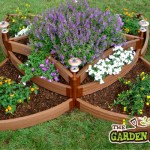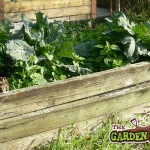Weekend project 101- Building your own raised bed is a natural progression of every avid gardener and something that we must all do at some point in our many years of gardening. The benefits of a raised bed are extensive and certainly outweigh the few negatives
- Timber Raised Beds
- Raised beds
- Old Raised Bed
Now that I have mentioned the negatives of raised beds it would be best to expand on that a little first:
- Watering. A Raised bed can prone to drying out a lot faster than soil level beds. This can mean an increase need to water or need to install an irrigation system. It can also mean that he beds are more suited to growing plants that don’t require excessively wet conditions such as astilbes
- They can take time and money to construct. This however is true of any garden bed and in fact raised beds probably require less work than digging over a difficult site in the garden
You can build raised beds out of any long, flat material. Wood being the obvious choice but there are many alternatives including galvanise sheets, sleepers, concrete kerbing, cavity blocks and other recycled materials. Whichever material you use you can really get creative and come up with a whole array of shapes and sizes that are unique to your garden and sit perfectly into your garden’s setting
A few tips to ensure that your bed is suited to growing plants & vegetables
Depth: Ideally the growing zone should be at least 1 ½ ft deep. This will allow for deep root growth and will be sufficient to grow carrots and other root vegetables
Width: Beds really should not be wider than 3ft, if you build raised beds any wider then you will be unable to reach the centre of the bed making planting and maintenance difficult. If your back is bad then build up: the best advantage of raised beds is that they take out the whole need to bend over and strain your back, so the higher you build the less back ache in the future
Quality soil: This is the cornerstone of all good gardening and with raised beds you have complete control over the quality of your topsoil. Garden soil should be fertility, light, well draining, not stick when wet, rich in organic matter, full of worms and not smelly. Ideally mix well rotted farm yard manure with a loam clay soil. Add fertiliser to the raised beds every spring
Location: Choose a sunny but sheltered spot. 99% of plants and vegetables require a good deal of sun to grow and shelter from wind will benefit all plants especially when young and especially vegetable crops. Also shelter will help to prevent frost fleece, protective netting and other covers from blowing away when you need them the most
Safe for consumption: make sure that the materials you use to build a raised bed is suitable for growing vegetables. Some old and recycled materials such as timber railway sleepers have wood preservative on them and should not be used in edible gardens


